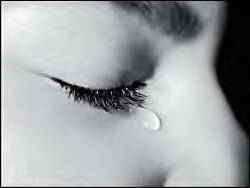Bipolar disorder is a treatable illness marked by extreme changes in mood, thought, energy, and behavior. Bipolar disorder is also known as manic depression because a person’s mood can alternate between the “poles,” mania (highs) and depression (lows). The change in mood can last for hours, days, weeks or months.
http://www.youtube.com/watch?v=hl-s1knNNV0
What bipolar is not?
Bipolar disorder is not a character flaw or sign of personal weakness.
Who bipolar disorder affects?
Bipolar disorder affects more than two million adult Americans. It usually begins in late adolescence, often appearing as depression during teen years, although it can start in early childhood or later in life. An equal number of men and women develop this illness. Men tend to begin with a manic episode, women with a depressive episode. Bipolar disorder is found among all ages, races, ethnic groups, and social classes. The illness tends to run in families and appears to have a genetic link. Like depression and other serious illnesses, bipolar disorder can also negatively affect spouses, partners, family members, friends, and co-workers.
Types of bipolar disorder
Different types of the disorder are determined by patterns and severity of bipolar symptoms of highs and lows.
Bipolar I disorder is characterized by one or more manic episodes or mixed episodes-symptoms of both a mania and a depression occurring nearly everyday for at least one week-and one or more major depressive episodes. Bipolar I disorder is the most severe form of the illness, marked by extreme manic episodes.
Bipolar II disorder is characterized by one or more depressive episodes accompanied by at least one hypomanic episode. Hypomanic episodes have symptoms similar to manic episodes but are less severe, and must be clearly different from a person’s non-depressed mood.
Cyclothymic disorder is characterized by chronic fluctuating moods with periods of hypomania and depression. The periods of both depressive and hypomanic symptoms are shorter, less severe, and do not occur with regularity as experienced with bipolar I or II. However, these mood swings can impair social interactions and work. Many people with cyclothymia develop a more severe form of bipolar illness.
Symptoms of bipolar disorder
Most people who have bipolar disorder talk about experiencing “highs” and “lows.” These swings can be severe, ranging from extreme energy to deep despair. The severity of the mood swings and the way they disrupt normal life activities distinguish bipolar mood episodes from ordinary mood swings.
Mania Symptoms
• Increased physical and mental activity and energy
• Heightened mood, exaggerated optimism, and self-confidence
• Excessive irritability, aggressive behaviour
• Decreased need for sleep without experiencing fatigue
• Racing speech, thoughts, and flight of ideas
• Increased sexual drive
• Reckless behaviour
Depression Symptoms
• Prolonged sadness or unexplained crying spells
• Significant changes in appetite and sleep patterns
• Irritability, anger, worry, agitation, anxiety
• Pessimism, loss of energy, persistent lethargy
• Feelings of guilt and worthlessness
• Inability to concentrate, indecisiveness
• Recurring thoughts of death and suicide
How common is bipolar disorder in children?
Bipolar disorder is more likely to affect the children of parents who have the disorder. When one parent has bipolar disorder, the risk to each child is estimated to be 15-30%. When both parents have the disorder, the risk increases to 50-75%. Symptoms may be difficult to recognize in children because they can be mistaken for age-appropriate emotions and behaviors of children and adolescents. Bipolar symptoms may appear in a variety of behaviors. According to the American Academy of Child and Adolescent Psychiatry, up to one-third of the 3.4 million children with depression in the United States may actually be experiencing the early onset of bipolar disorder.
Treatment for bipolar disorder
Several therapies exist for bipolar disorder and promising new treatments are currently under investigation. Because bipolar disorder can be difficult to treat, it is highly recommended that you consult a psychiatrist or a general practitioner with experience in treating this illness. Treatments may include medication, talk therapy, and support groups.
